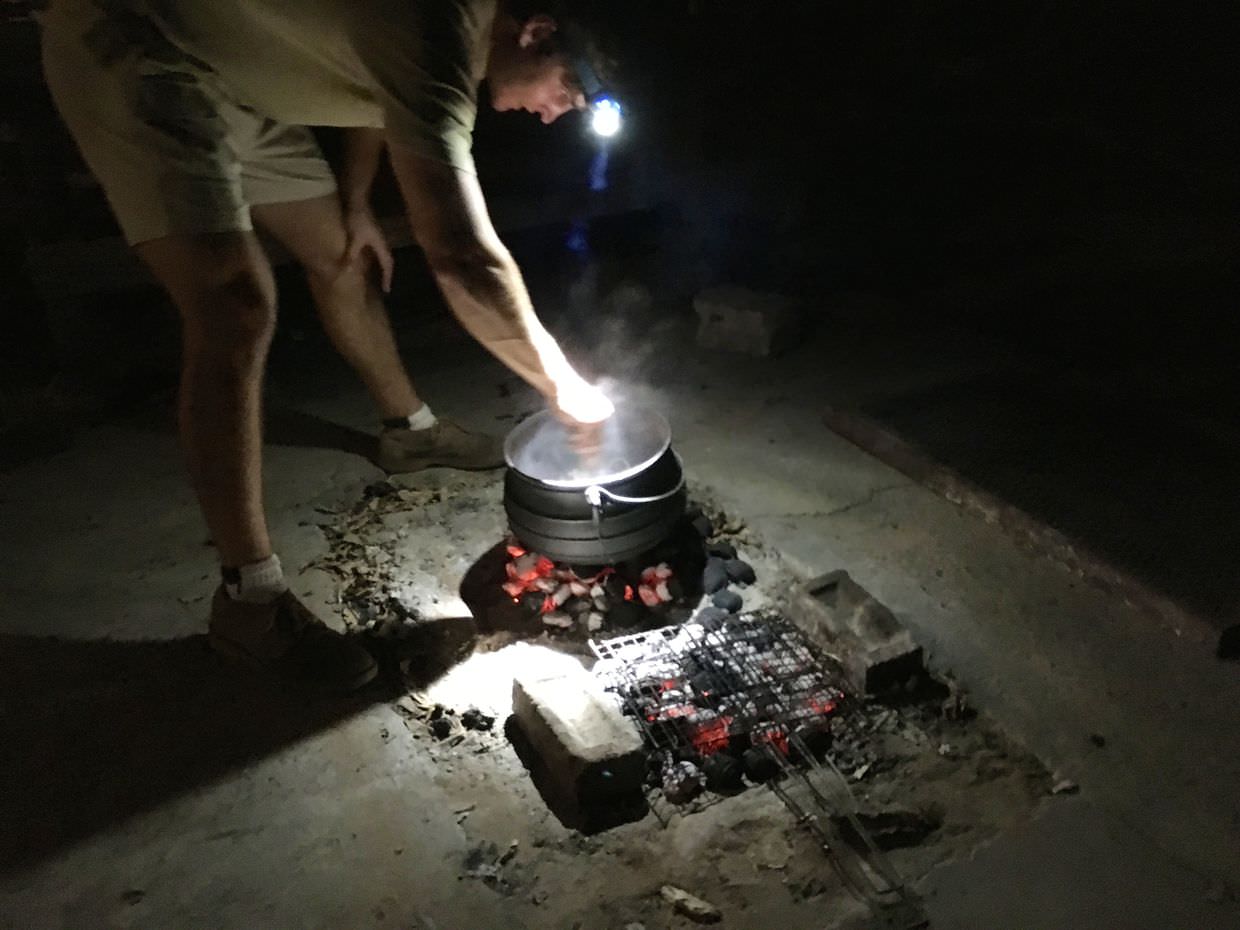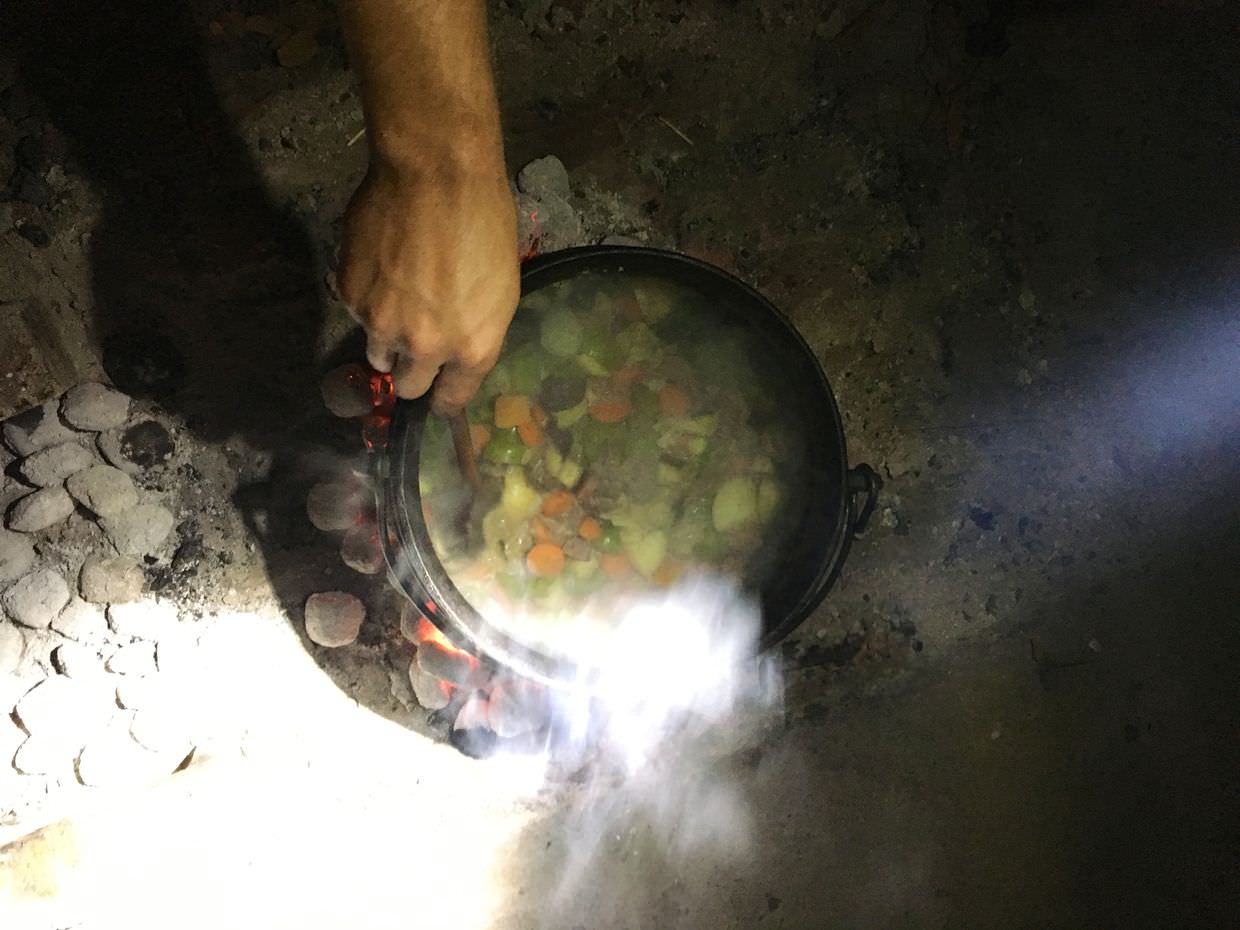Attempting wild dog call-ups
Day 10 - Searching for dogs
At 4:30am we left in search of those troublesome dogs. Stinky rotten leg in tow. As Hayden had done many times before, too many times, we drove out to the park fence-line and searched for them – attempting to do an habituation, a call-up, something to begin the process again of getting them close to a truck. The dogs, of course, needed catching again; this time a little more wary, a little smarter, it’d be more difficult. These habituations are essential for a successful dart and sedation.
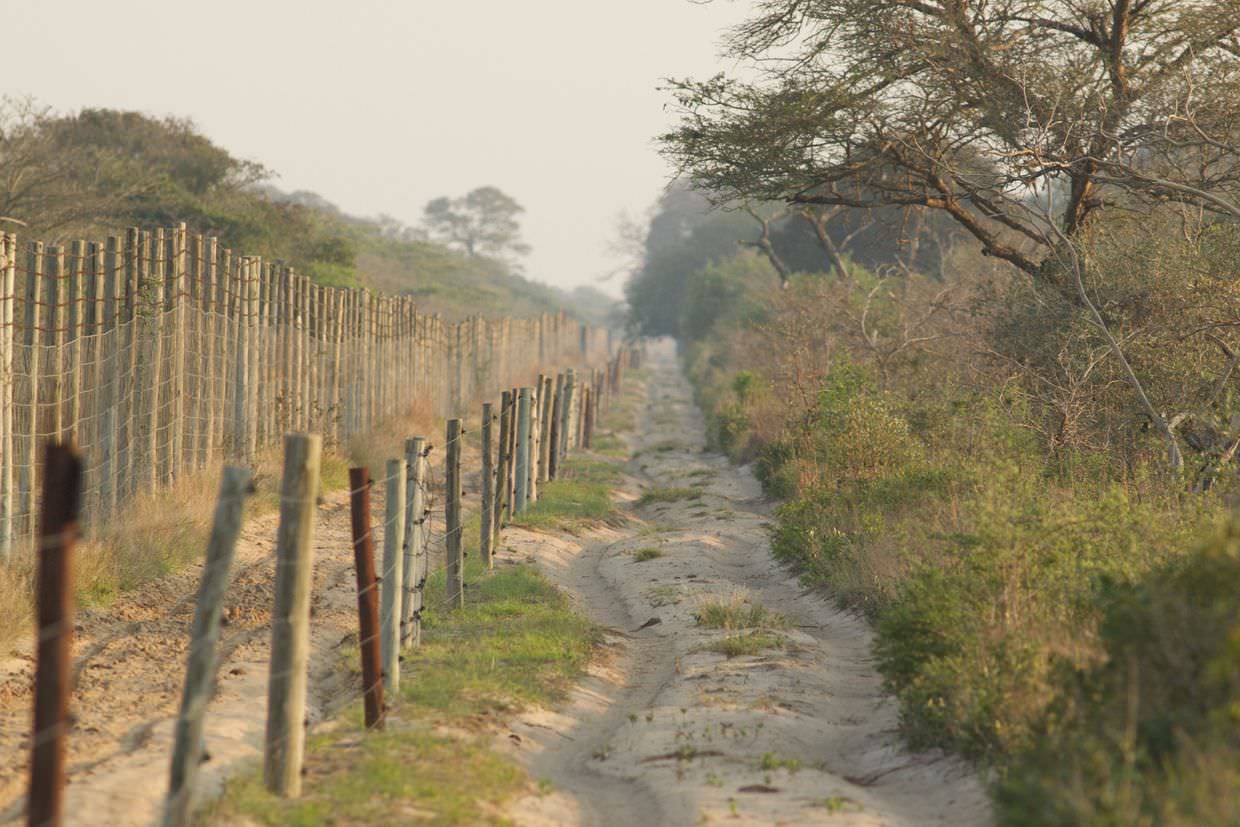
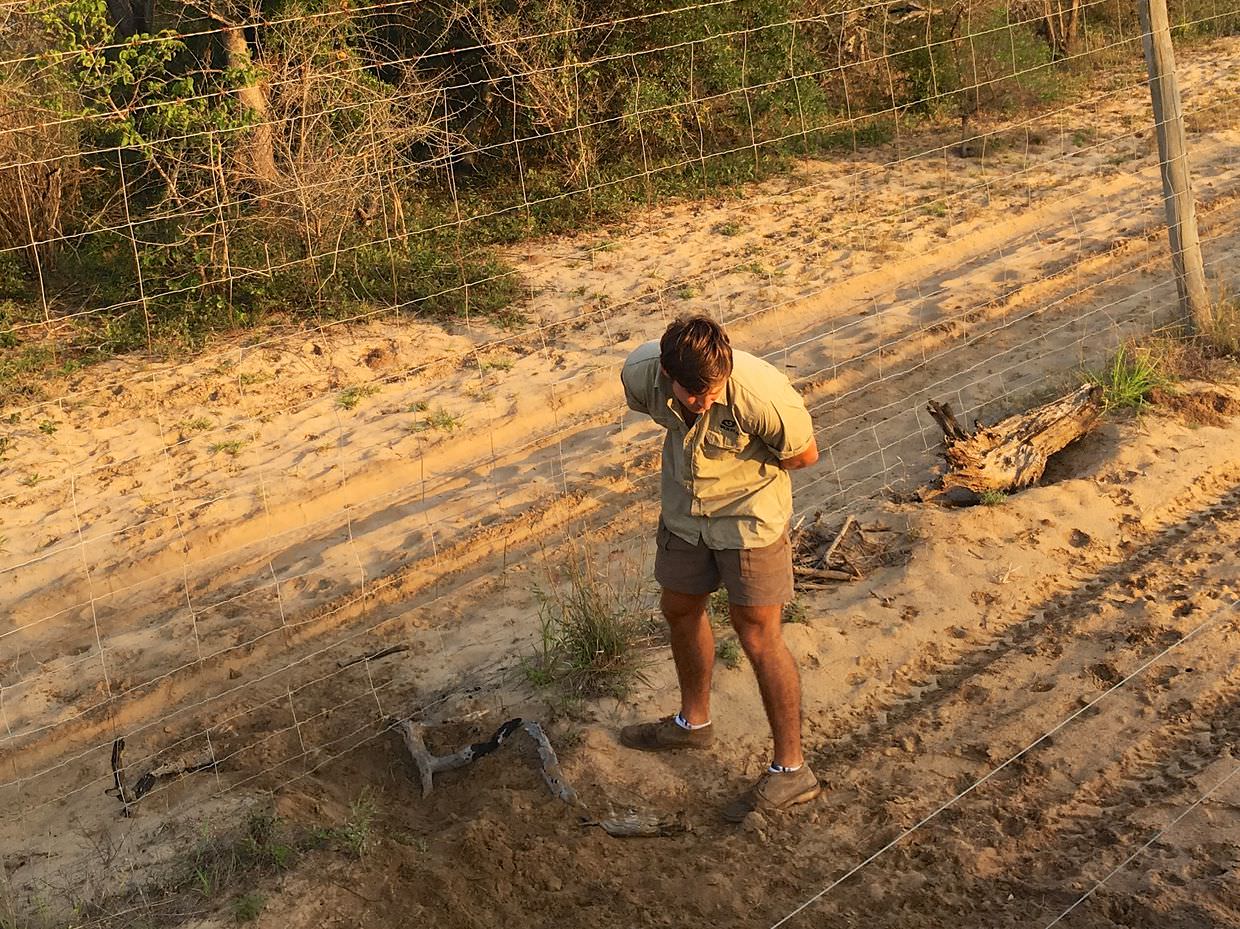
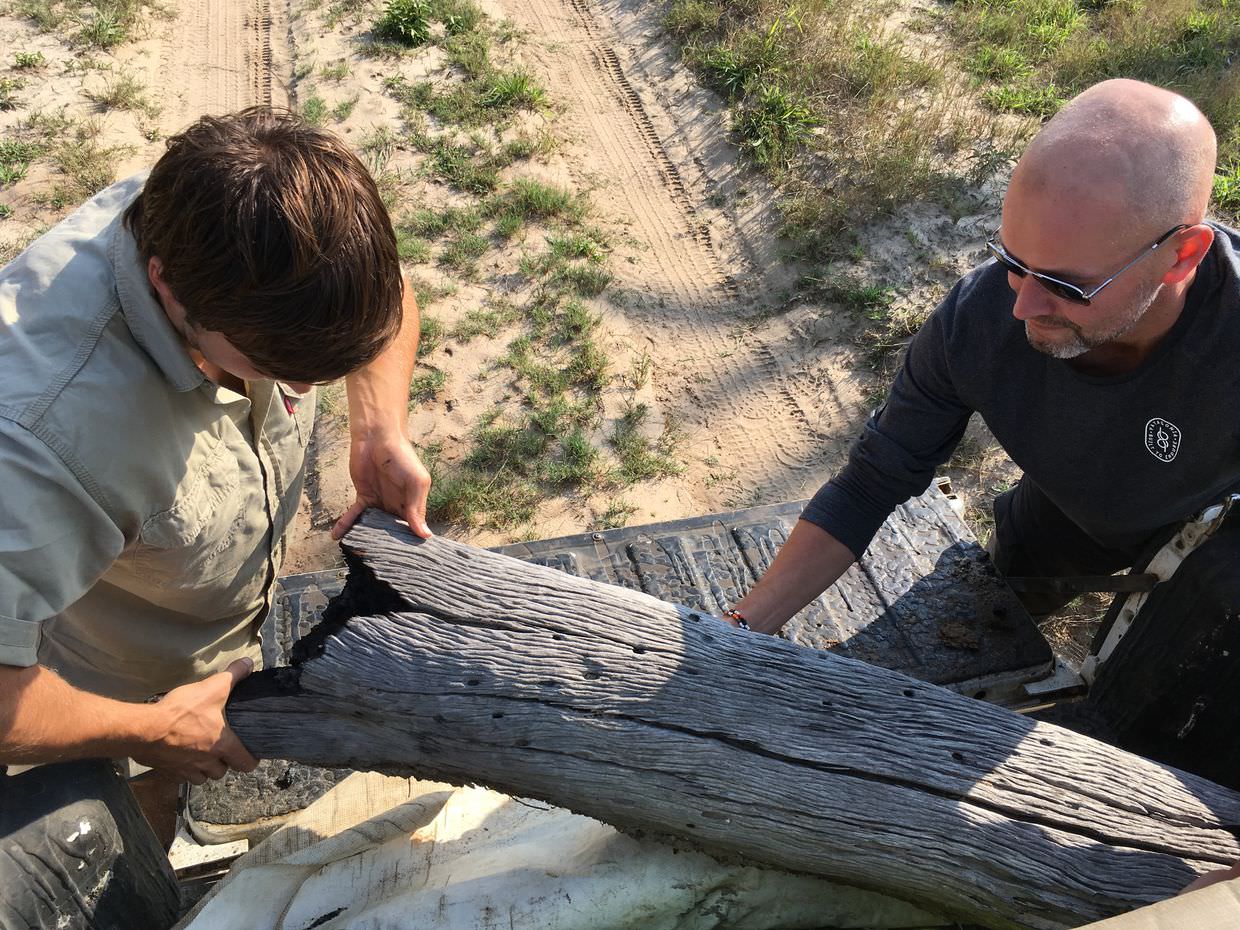
Along the fence we searched for fresh signs of digging, and at every hole we plugged it with tree branches. Tracks in the sand showed us where they’d come and gone. We didn’t find the dogs, but we could see where moles had dug their tunnels and we came across fresh leopard tracks. I climbed through the electric fence to fill-in a fence hole and take a good look at these tracks – the closest I’d come to a leopard on my whole trip.
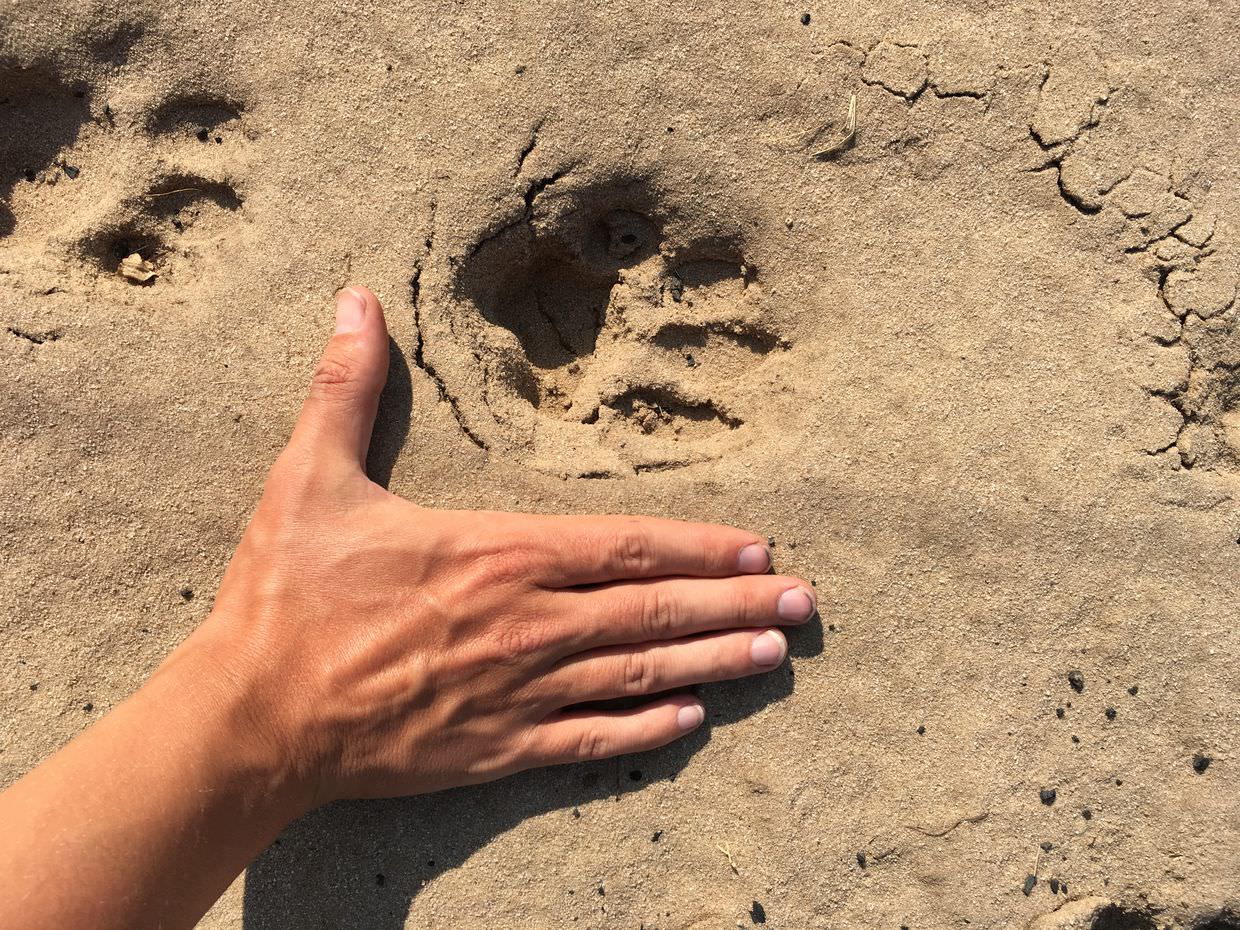
From the fence line we took a long and bumpy road out to a beacon. A lesser travelled part of the park, the small hills looked beautiful in the sunshine. We got a strong signal for F76 – a lioness, she likes to hang around here, but we didn’t see her. Besides the beacon there were fresh lion tracks; a big male. While scanning and having coffee we remained wary of possible un-collared lion in the area.
We saw black-collared barbets, a little goshawk, puffbacks clicked and whistled all morning, and green wood-hoopoes cackled in groups nearby. But the dogs were a no show. Besides the picnic site, their last known location, we left that stinky leg – we were all glad to see it go.

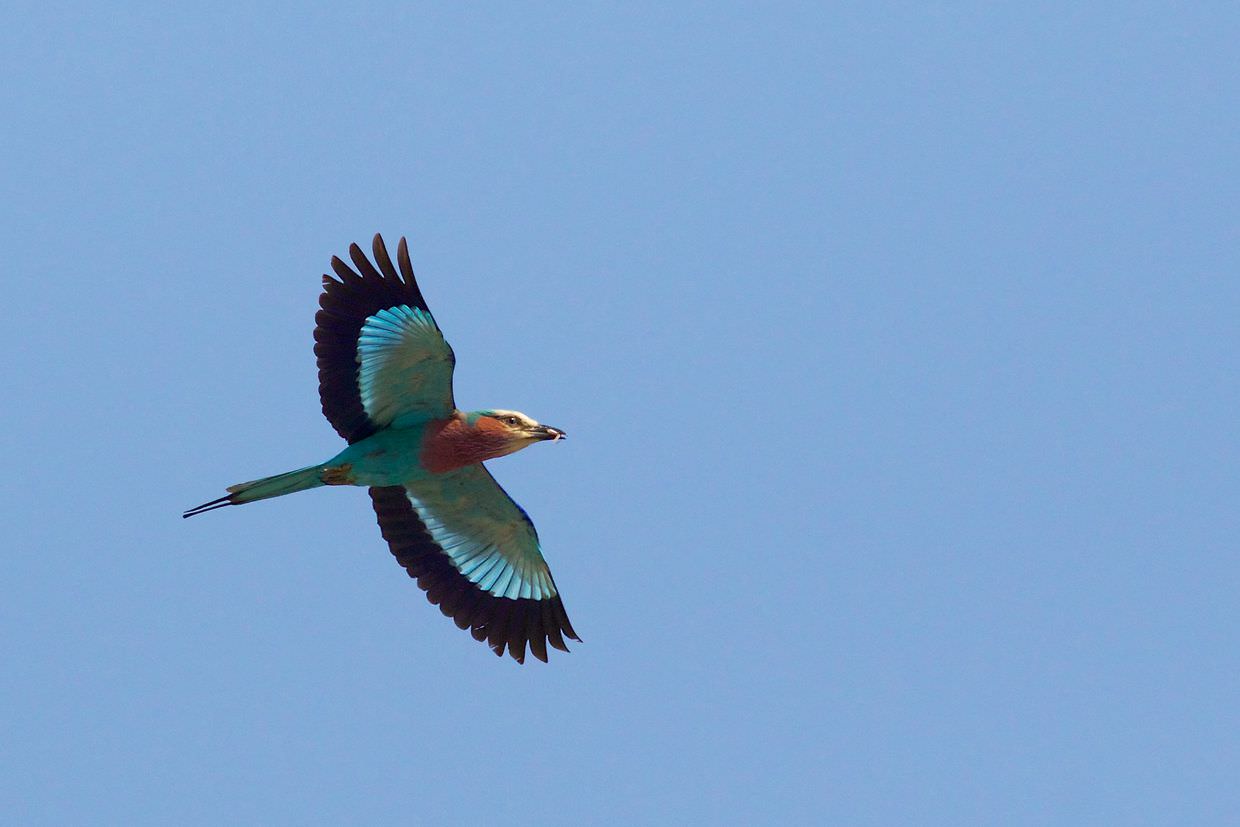
Elephants in the mud
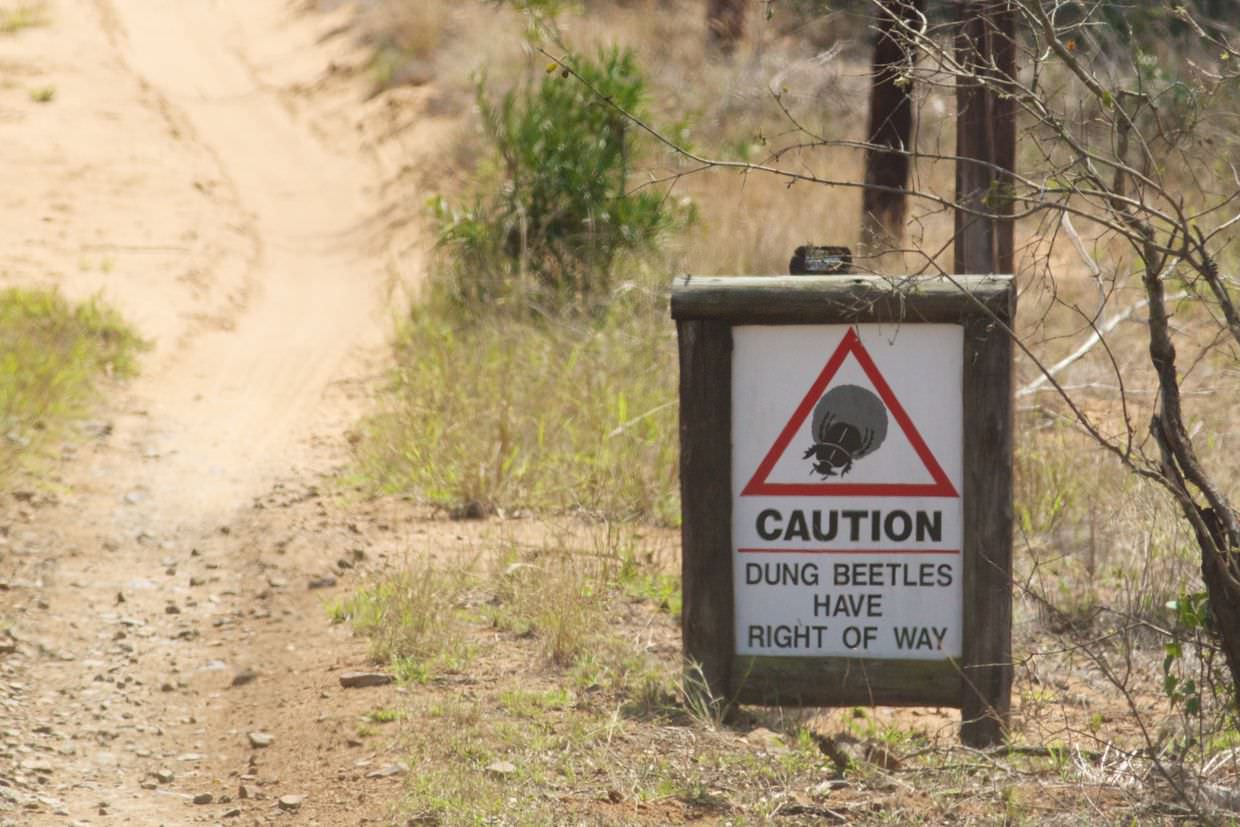
We all came on the hot midday session with Leo. This time I brought plenty of water. We drove East, out to the swamp in search of elephants. White-crowned lapwings walked in the sand, a white-bellied bustard ran away. At the bridge the lesser-striped swallows were catching flies.

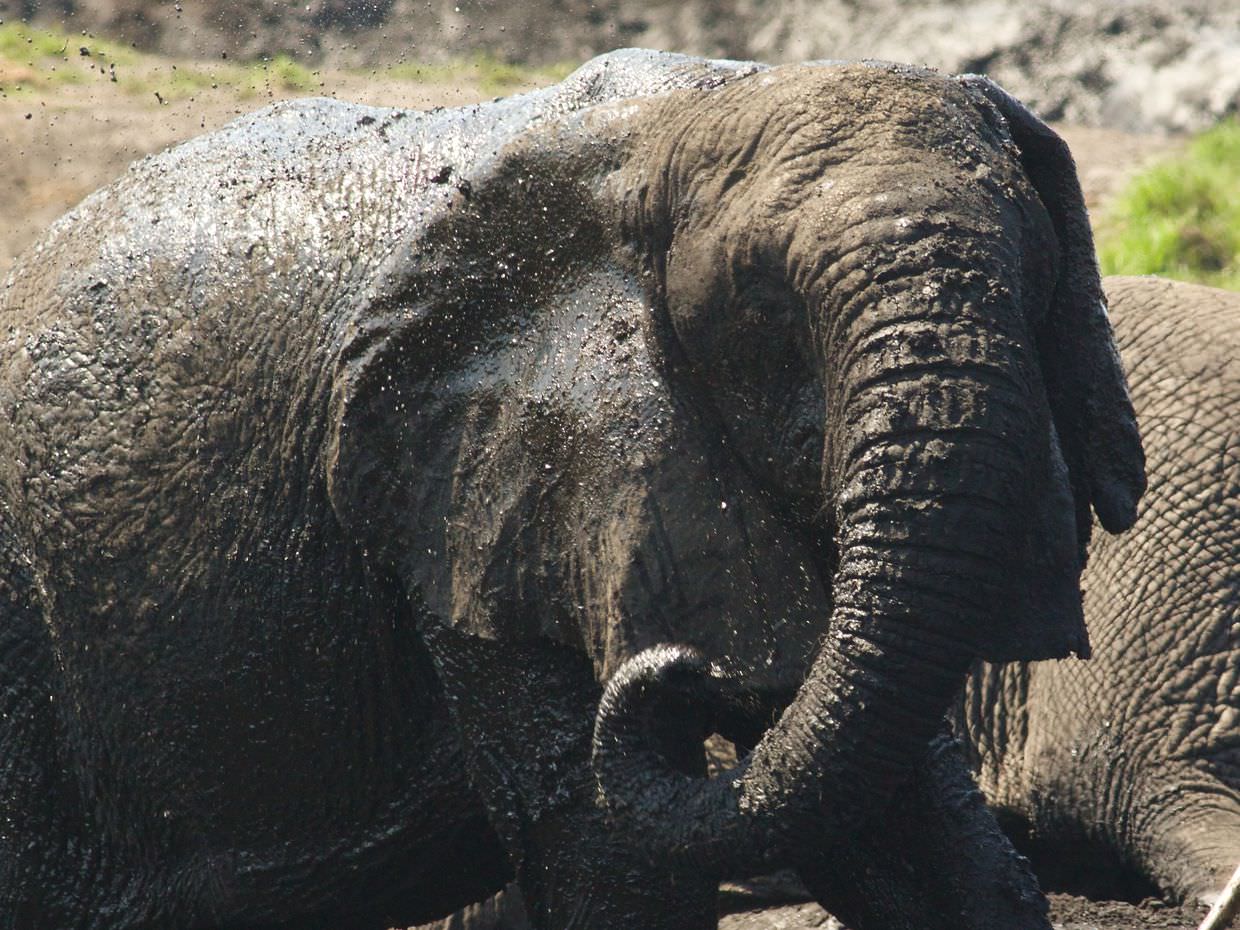
We found lots of elephants; they were here at the swamps in their herds; taking turns to get in the mud, to roll around, to cover themselves in the thick black stuff, to cool themselves down. Under the bright intense sunshine, in awful photography conditions, the grey elephants looked jet black, under their fresh coats of mud.
At camp Hayden found a snake, though not one to be afraid of. It was a thread snake and it fits snuggly into the palm of a hand, looking a lot like a metal necklace.
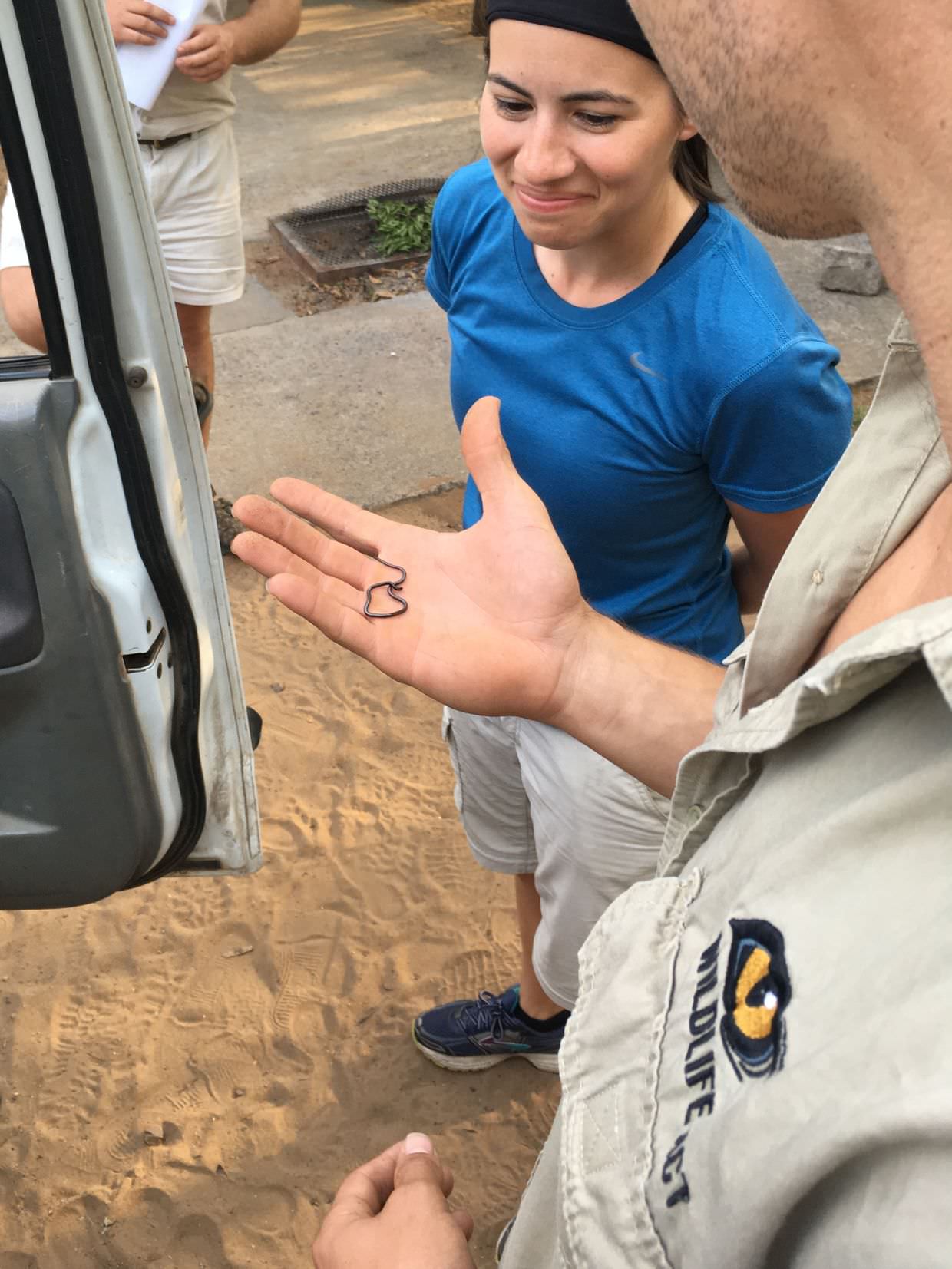
Still no sign of the dogs
Our 4pm session focused on finding these dogs. Satellite data told us their rough locale; we’d yet to pick up a signal for Elsa and we needed to find them. With Hayden we returned to the fence line, no signal again. At the picnic site, the leg untouched, no signal. At the fence line, no tracks, no signal. The dense thicket must be blocking the collar’s weak signal.
Parked up by the fence, Hayden and I headed out into the long grass with the telemetry, out to the tallest tree, which we’d climb; Hayden scanned for Elsa from the top while I kept look out and checked for ticks. Probably not the best idea to walk through this long grass in shorts, eh? Still nothing, no beeps, no dogs. On the way back a suni ran across the road, only Hayden saw it. At camp Joris cooked us his delicious oven-roasted chicken. Perhaps we’d have better luck tomorrow.
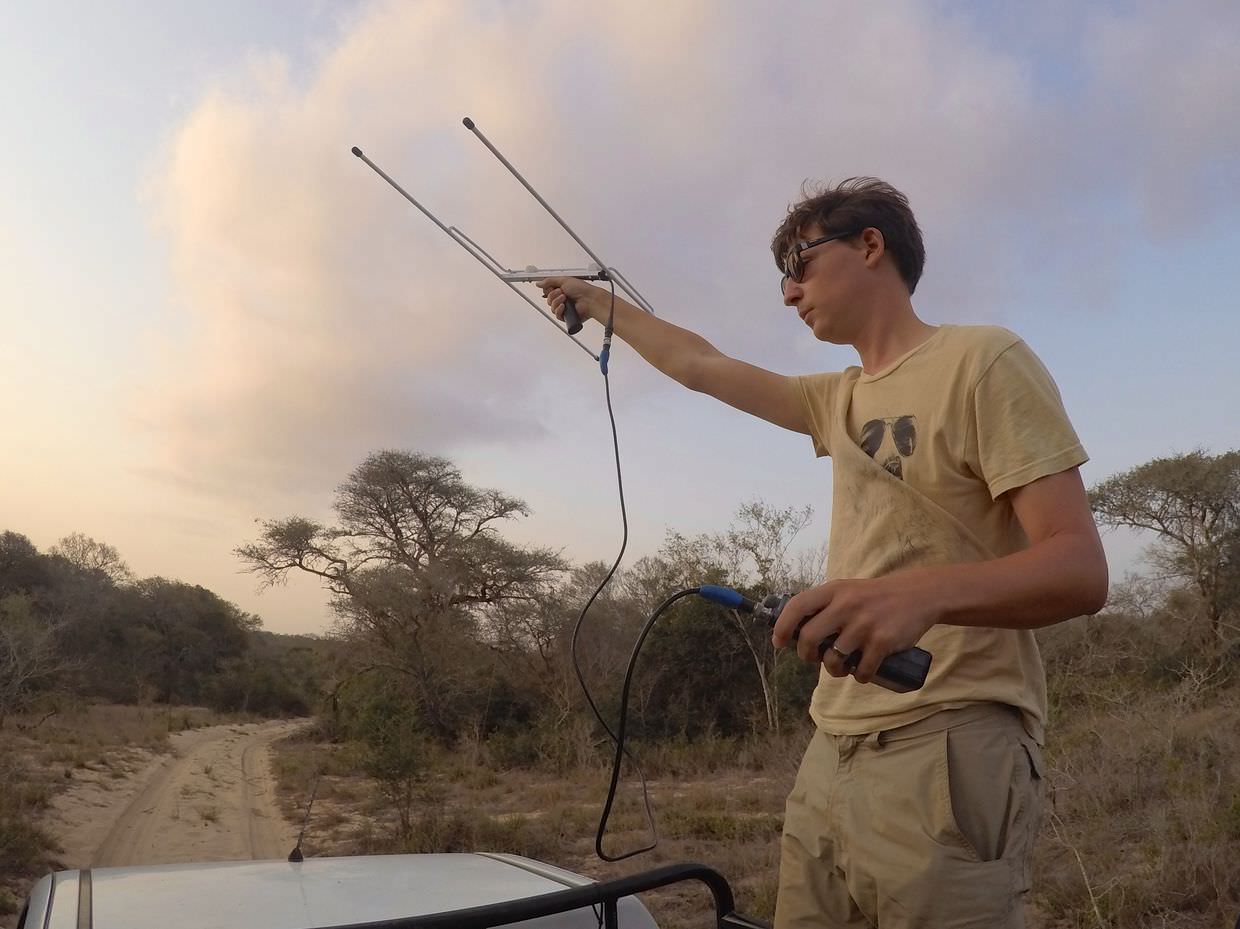
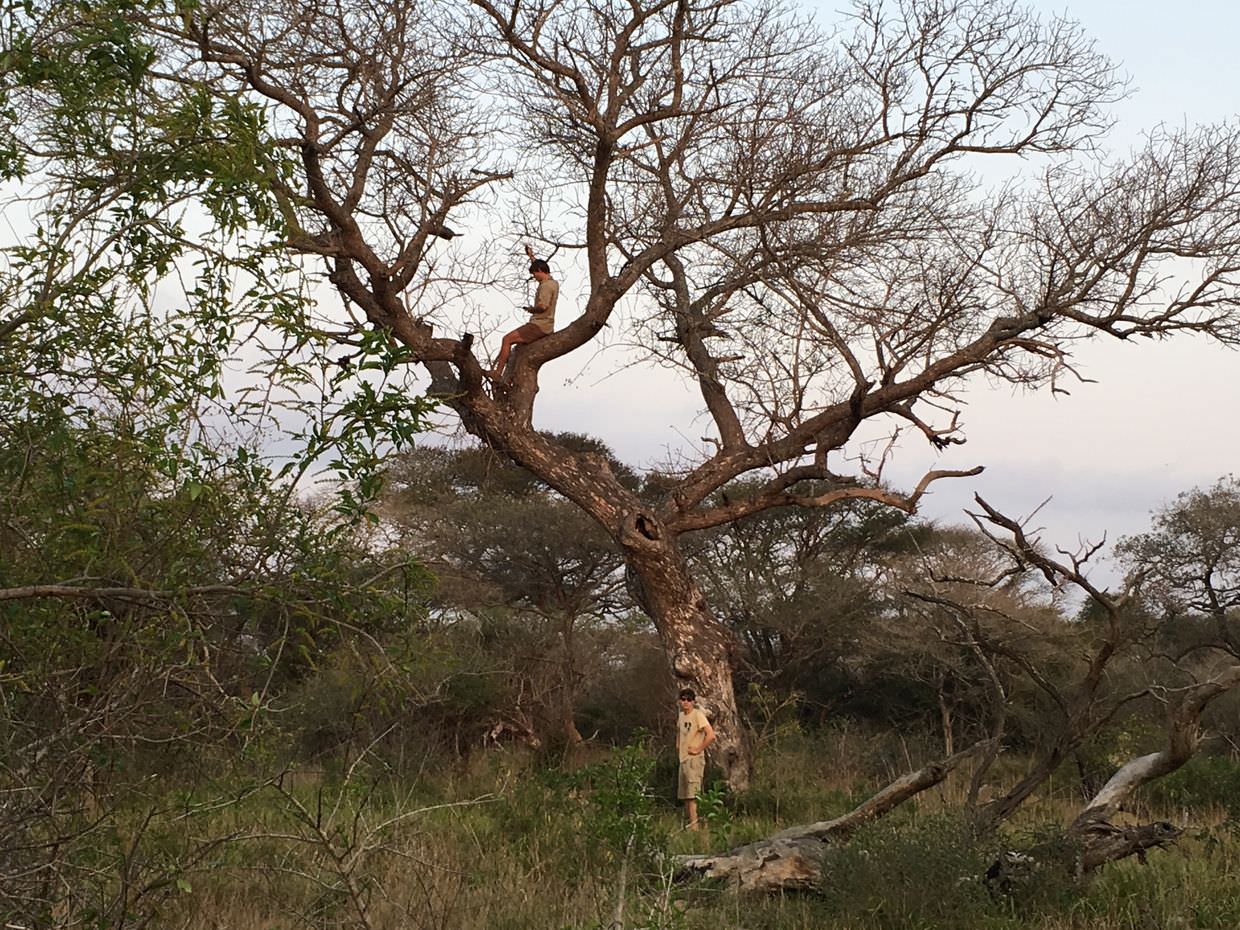
Day 11 - A long day on the bucky
Feeding wild dogs a fresh nyala
A short session this morning – a trip to the boma to feed the dogs. We had a fresh nyala this time, no stinky green leg; this one was merely bloody and tick-ridden. At the boma it was the usual; we undid the gates, drove in and used shovels to fill in the holes the wild dogs had made.
The dogs were hungry, they could smell the nyala, and while we shovelled sand they were less nervous around us, their hunger emboldening them, bringing them closer while we were on foot. Thankfully not too close. We lifted the dead antelope off the truck, chained it to the tree, and drove away; the dogs immediately ran in, tearing open the creature and going straight for the best bits. A liver is particularly tasty it seems. We photographed from the truck.
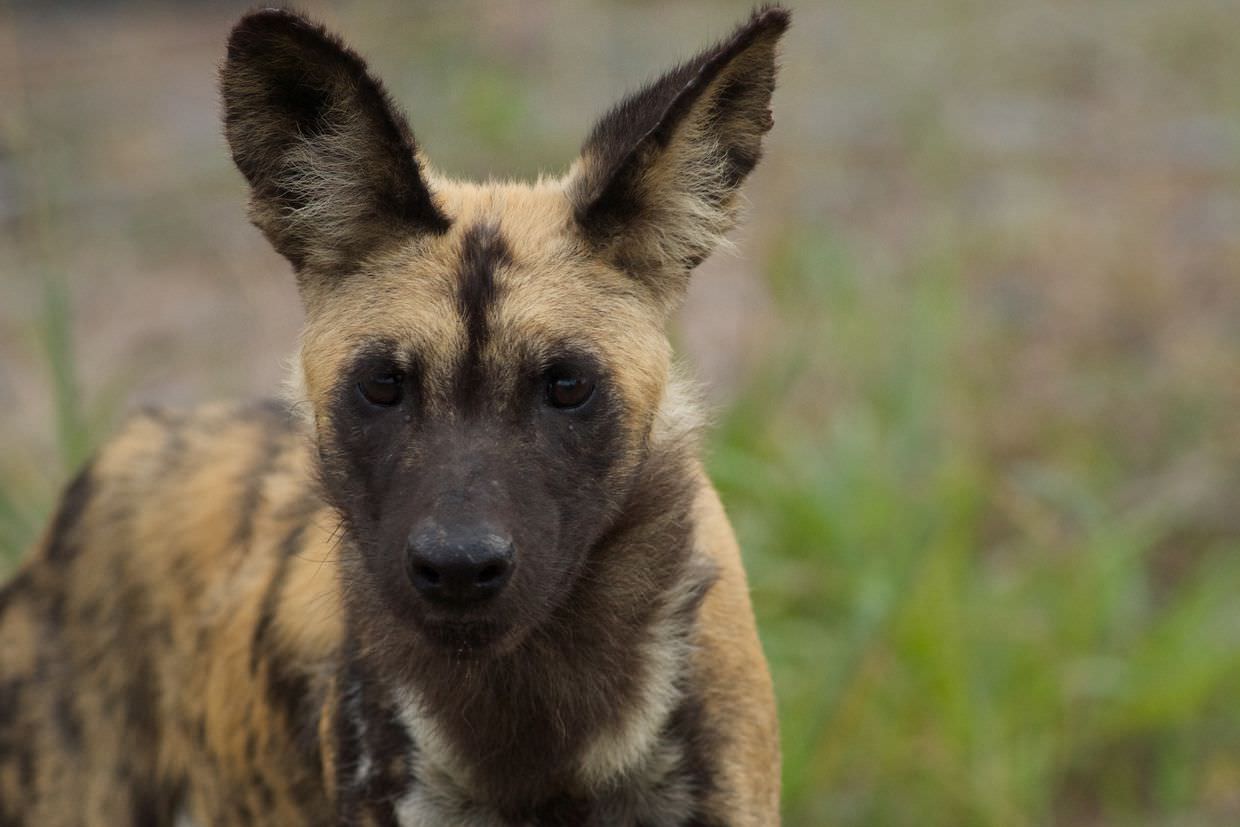
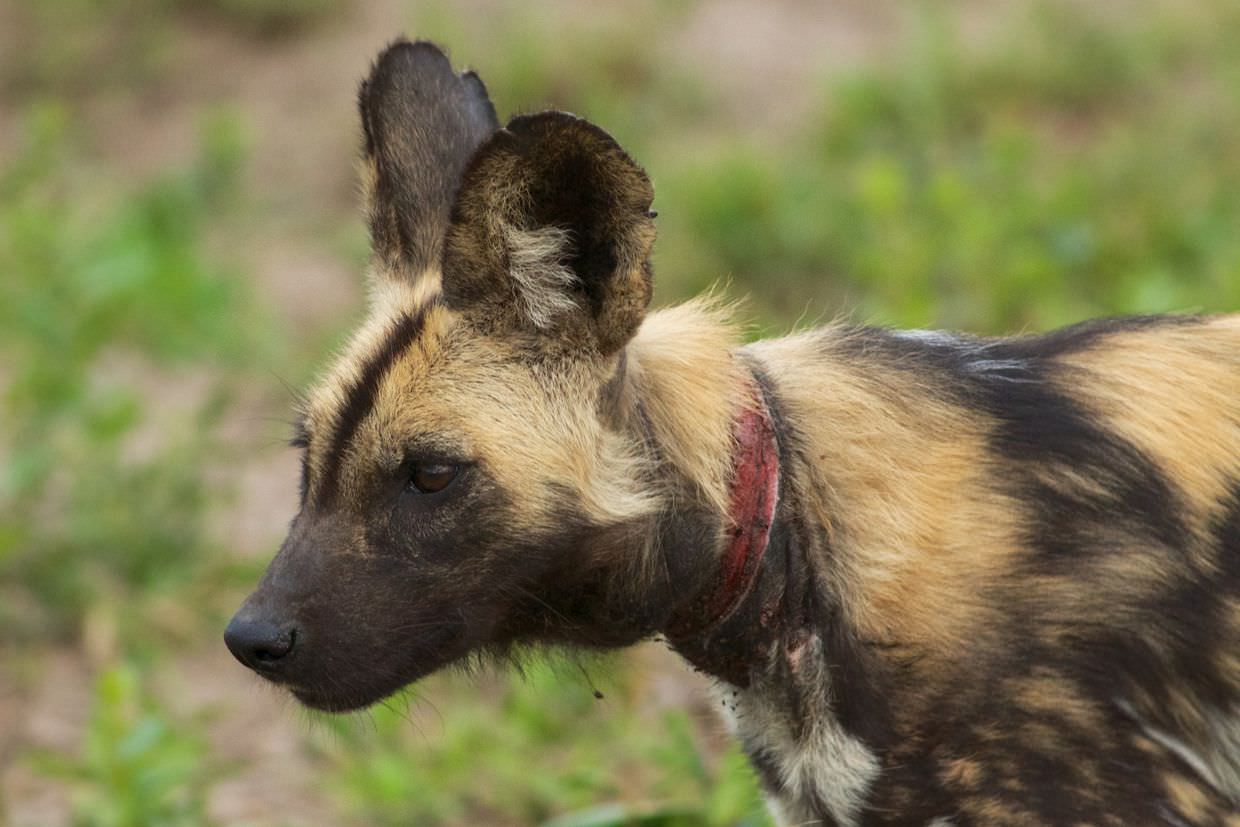
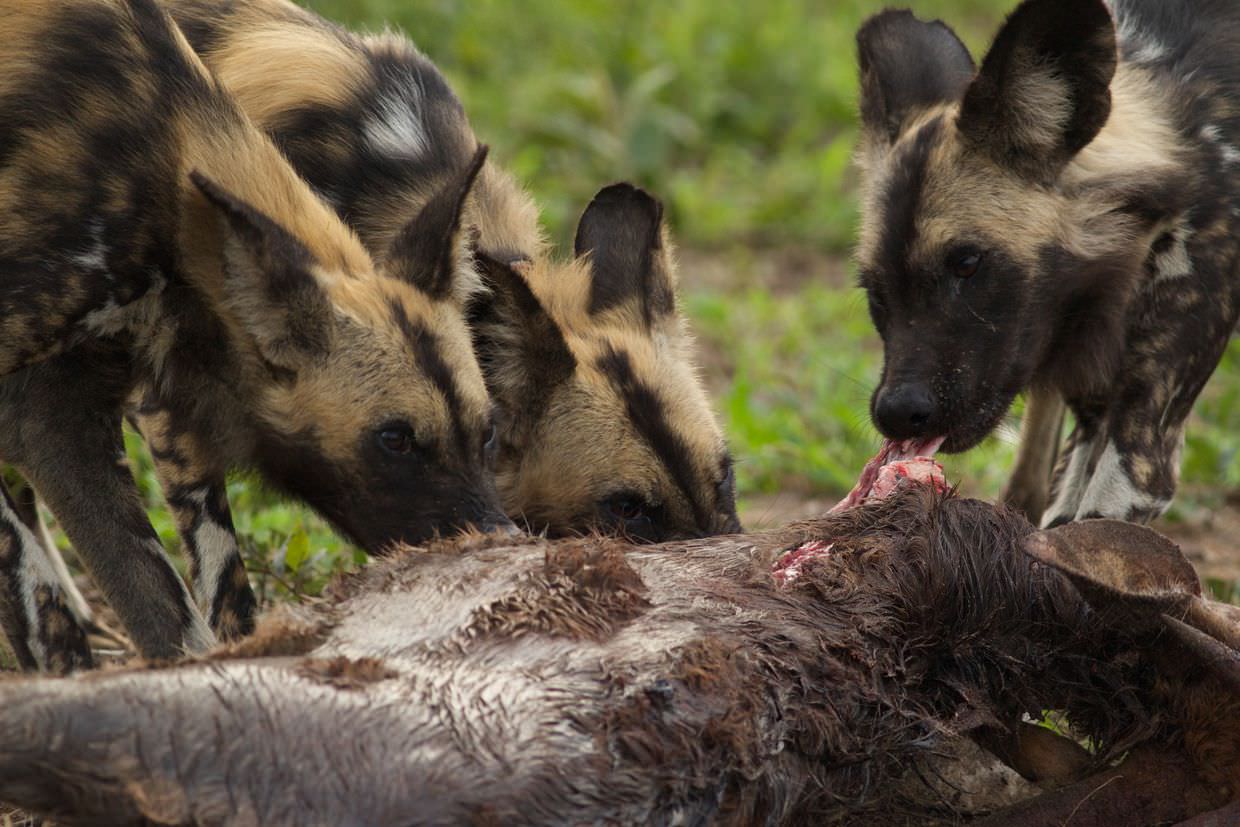
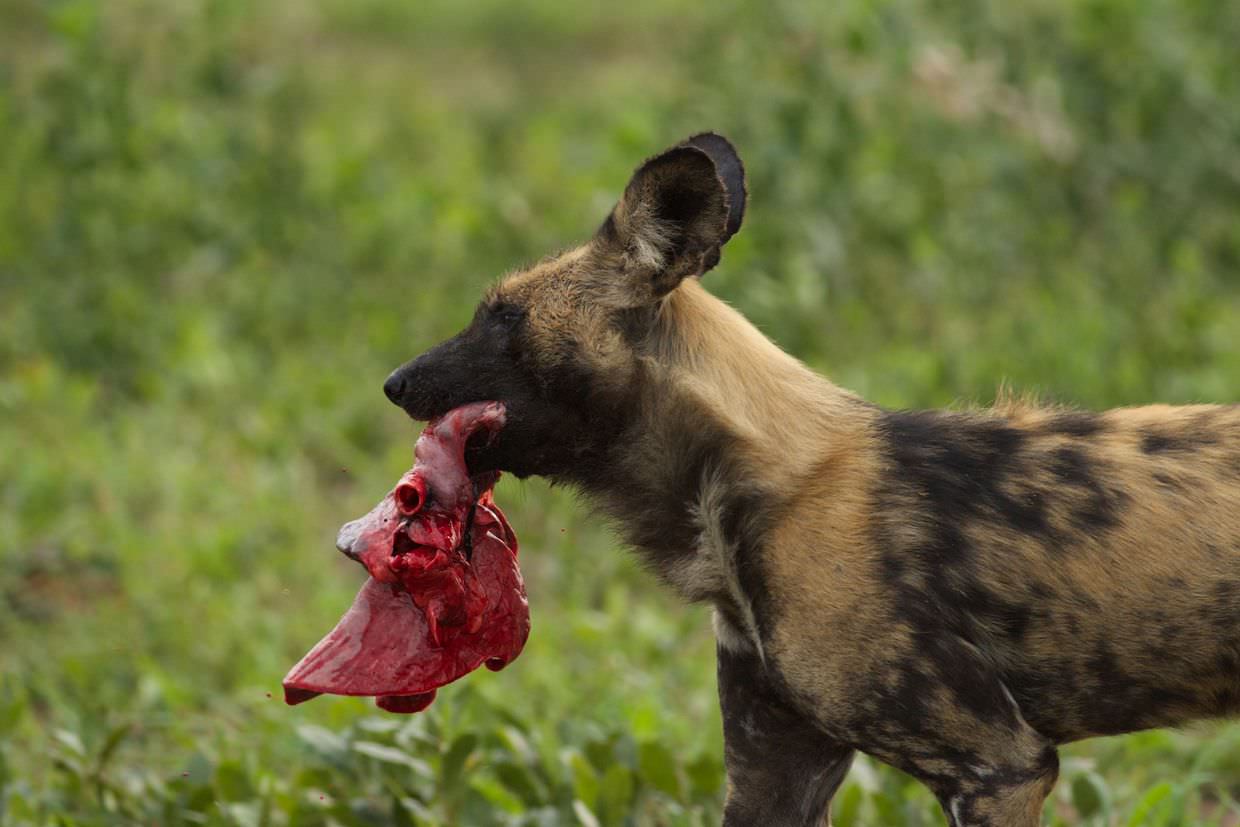
We did a short drive to look for lions, we scanned but couldn’t find any. There were though lots of crested guinea-fowls – all clucking together in unison; and a large rock monitor lizard who skulked along in the grass.
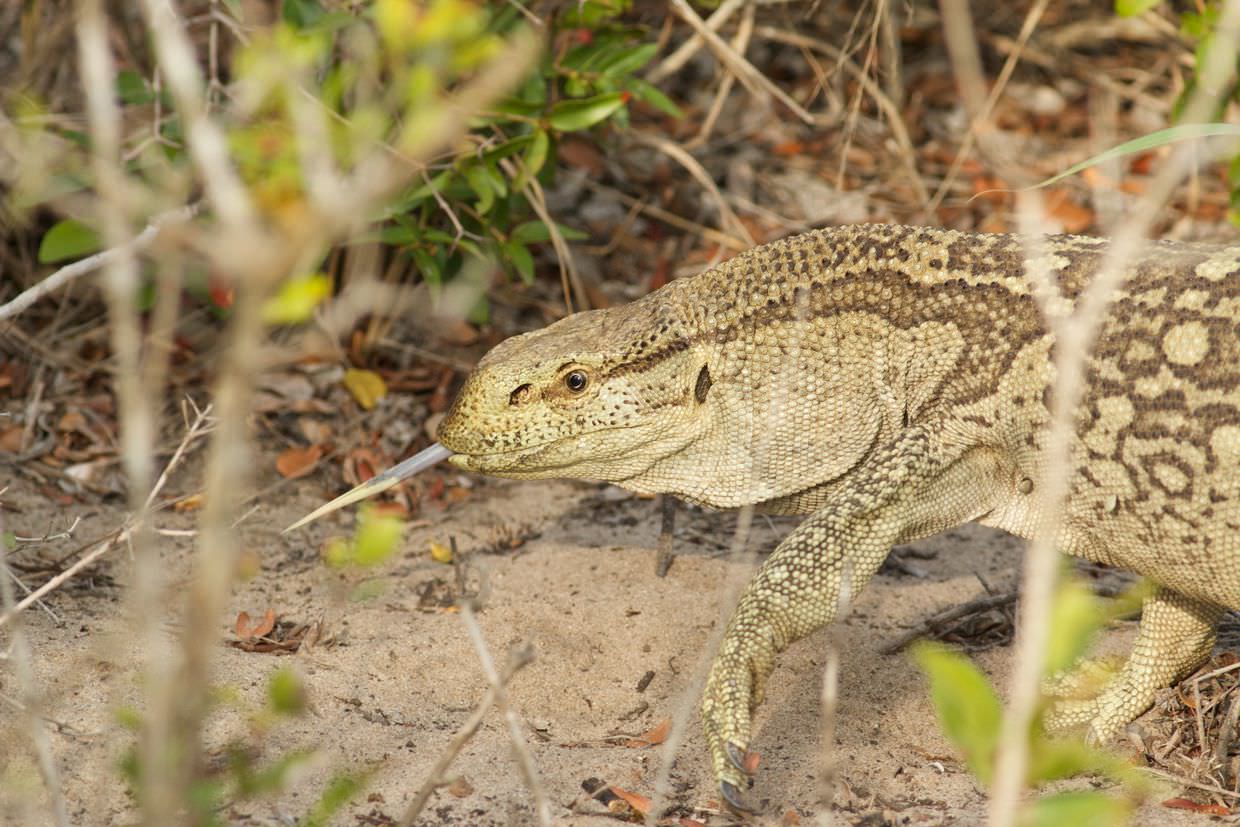
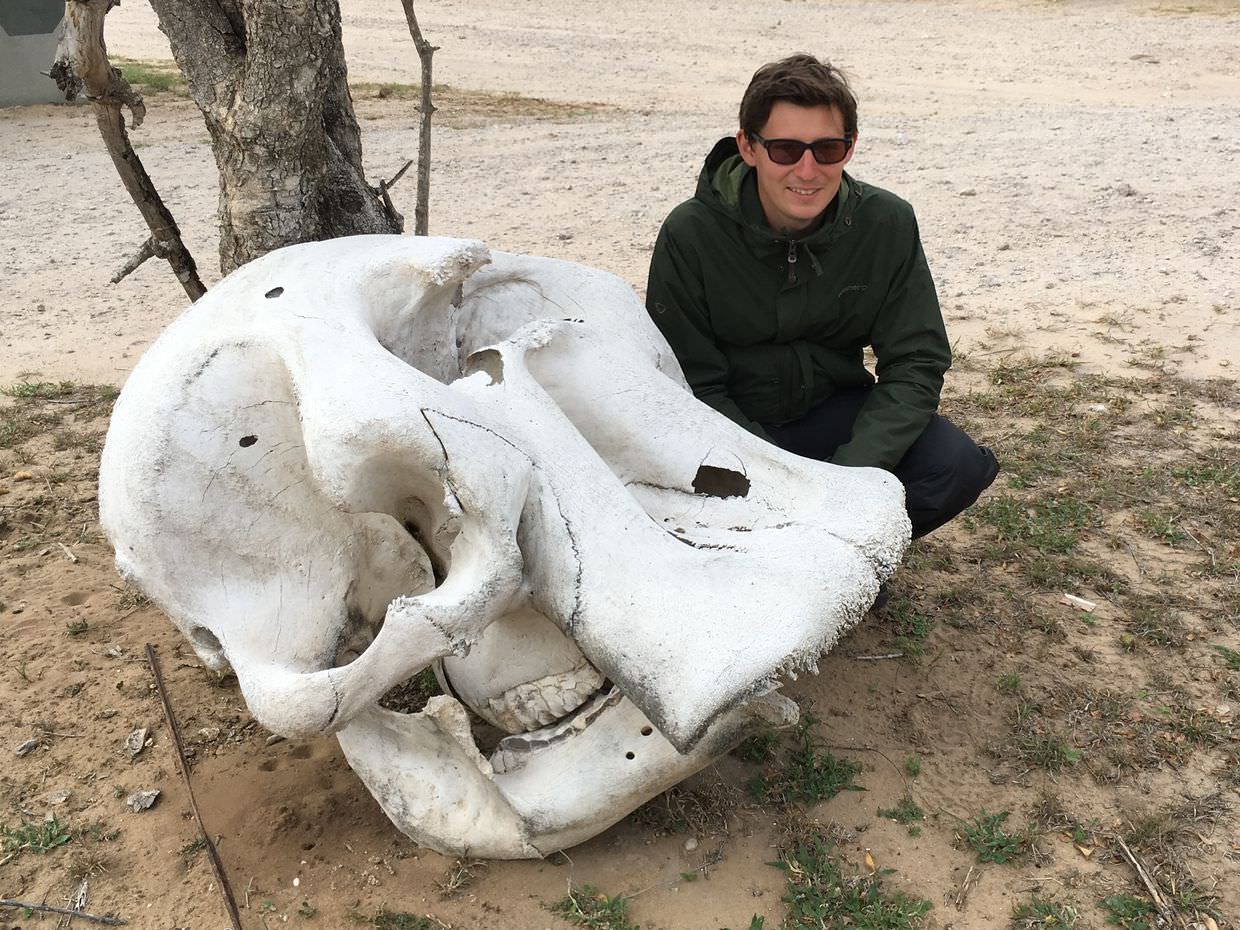
Last session with Leo
The temperatures had dropped, and this overcast session would be more comfortable than the last. We started on Tembe’s western loop, driving from the water tank, around and up to Ponweni hide. A large martial eagle sat at the top of a pod mahogany, a young giraffe and mother watched us, there were lion tracks on the road. No elephants though, we didn’t find any until we reached the hide – a breeding herd, they were just leaving.
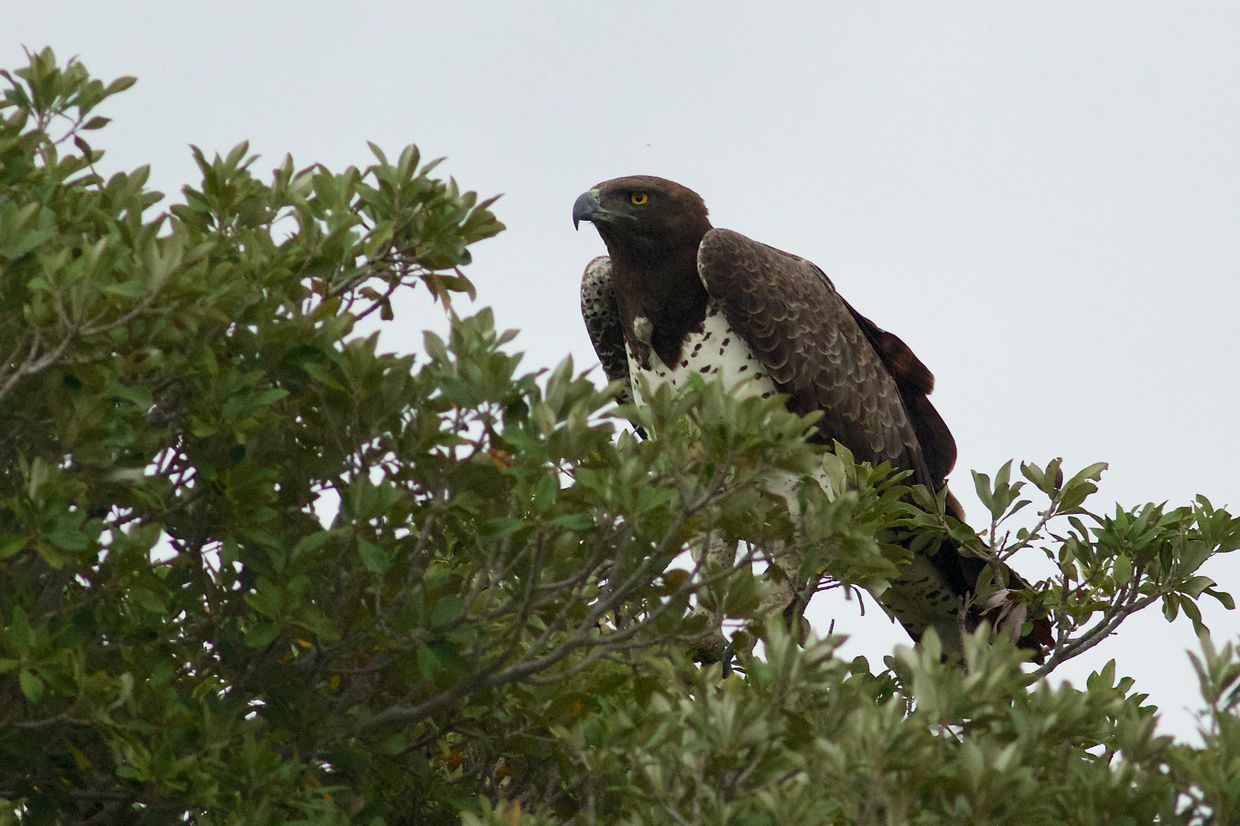
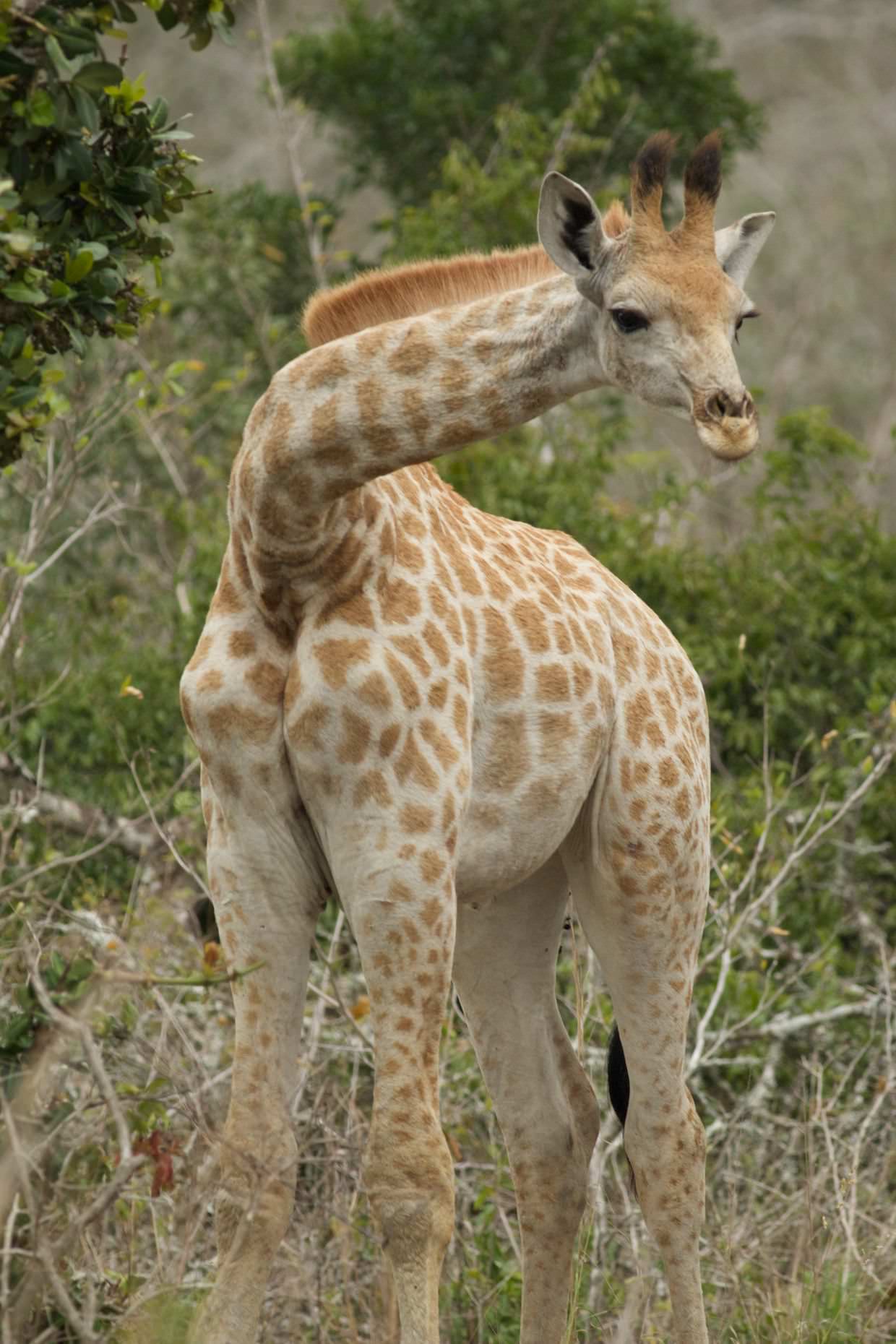
We continued East, down to the peat bog, past the swallows, the grey herons and the weavers. Buffalo rested in the swamp. Another breeding herd, in the distance, with a rowdy male – we watched him chase off a lesser bull.
At the waterhole, one more elephant – Mr McDonald his name. He was in must, we watched him cautiously while hamerkops, geese, kites and nyala drunk from the waterside. He drank, and sprayed, then walked in our direction, we swiftly left.
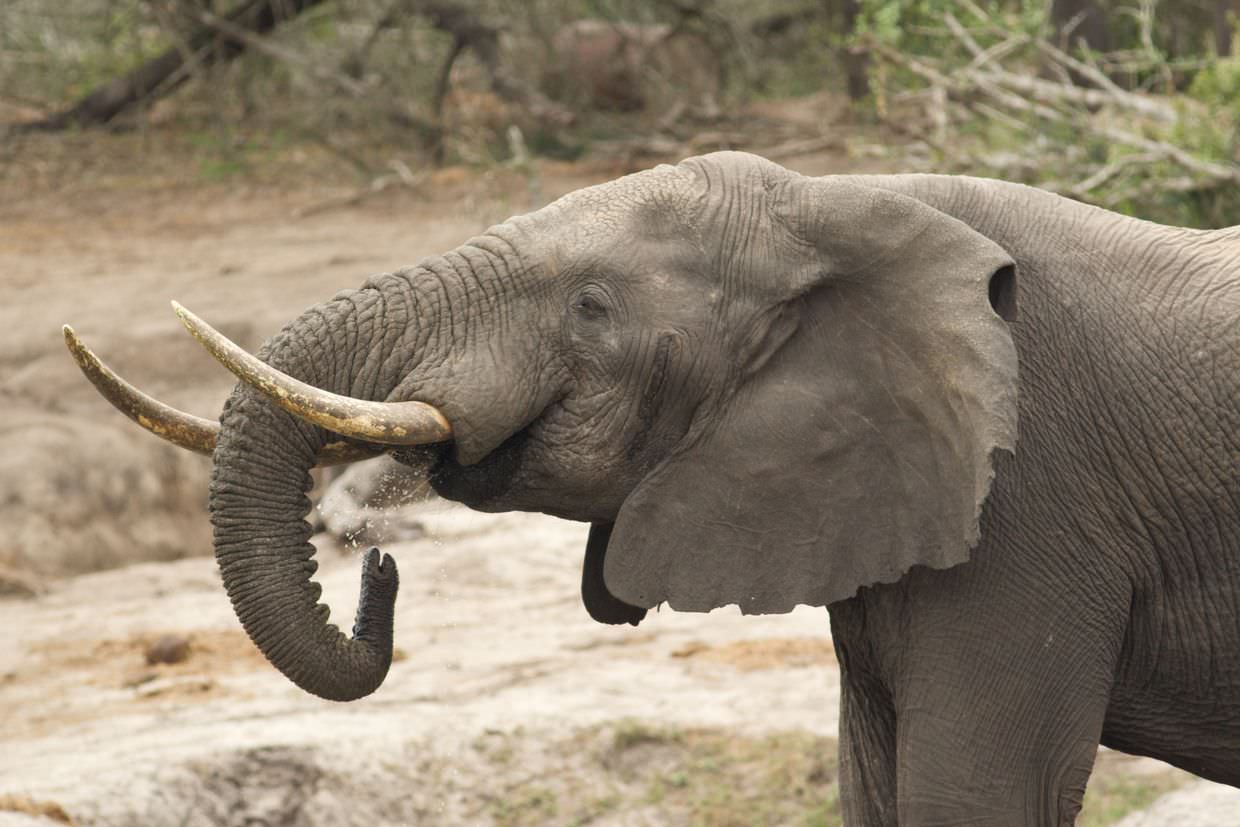
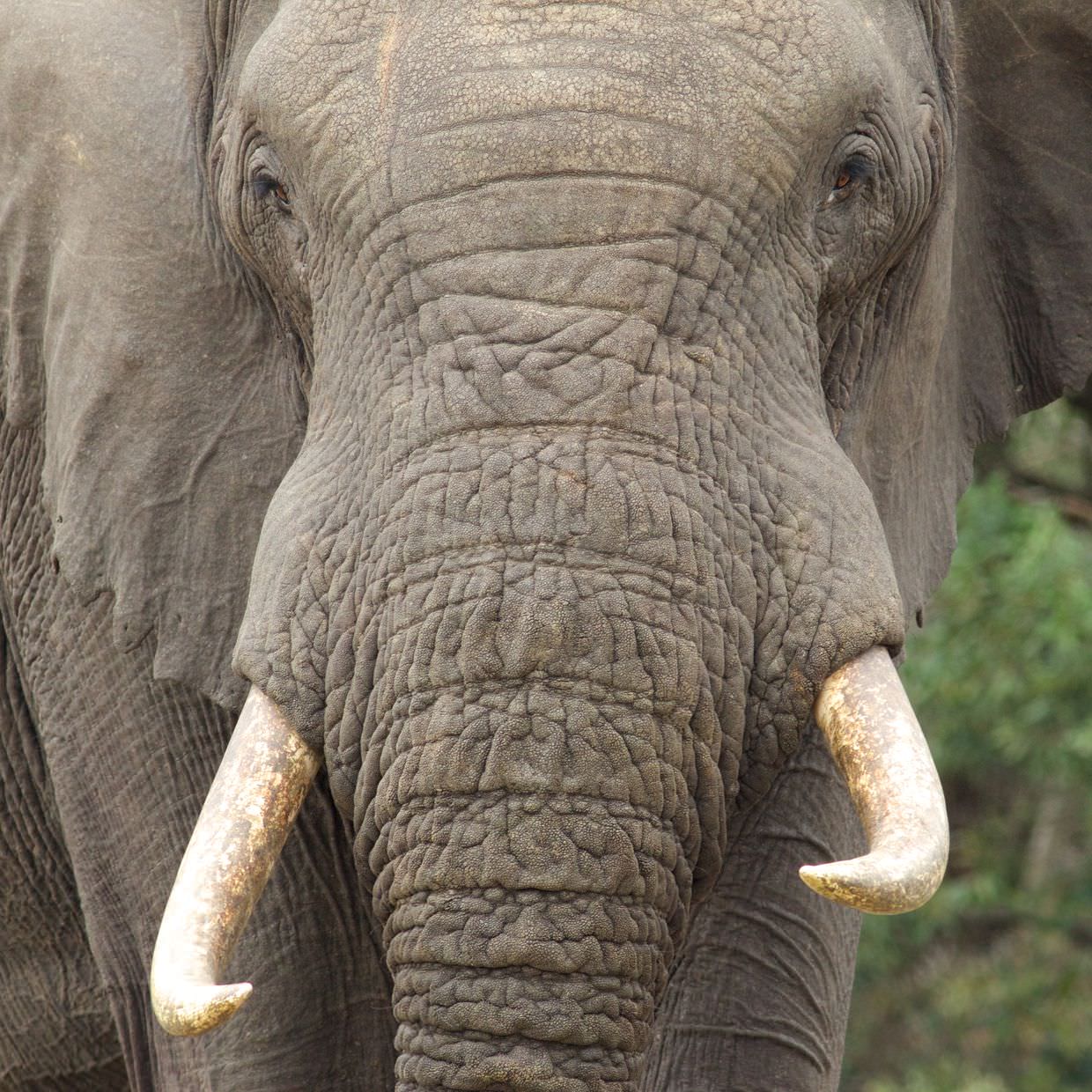
Deafening audio of twittering dogs
In our attempts to find and habituate the escapees we employed a new weapon. This time we brought with us fresh bait and a speaker system; the same one we used for the lion call-up. I sat up-front with Hayden, and we drove out to the park’s fence line, once more hoping to find these dogs and begin the long process of catching them.
We’d use the speakers to play the loud noise of twittering dogs; if the pack hear it they should respond and investigate. The noise of other dogs may confuse them, using this audio isn’t something that’s done lightly.
Satellite data told us they were still near to the picnic site, where the smelly leg had been left. But once again, this short range low power collar, gave us no beeps. We drove around, up and down, scanning intensely, trying to find them. Nothing.
Cue the audio and the bait. Out into the thicket we blasted the squeaky deafening sounds of twittering dogs. A recording of happy dogs feeding on a bait, a microphone discreetly attached somewhere. Twitter, twitter, squeal; these ephemeral dogs didn’t bring out the real ones. We drove and tried elsewhere, still nothing. No beeps, no visuals; the once-a-day satellite data our only guide – at least they were in the reserve. This was getting frustrating. It rained on the way home.
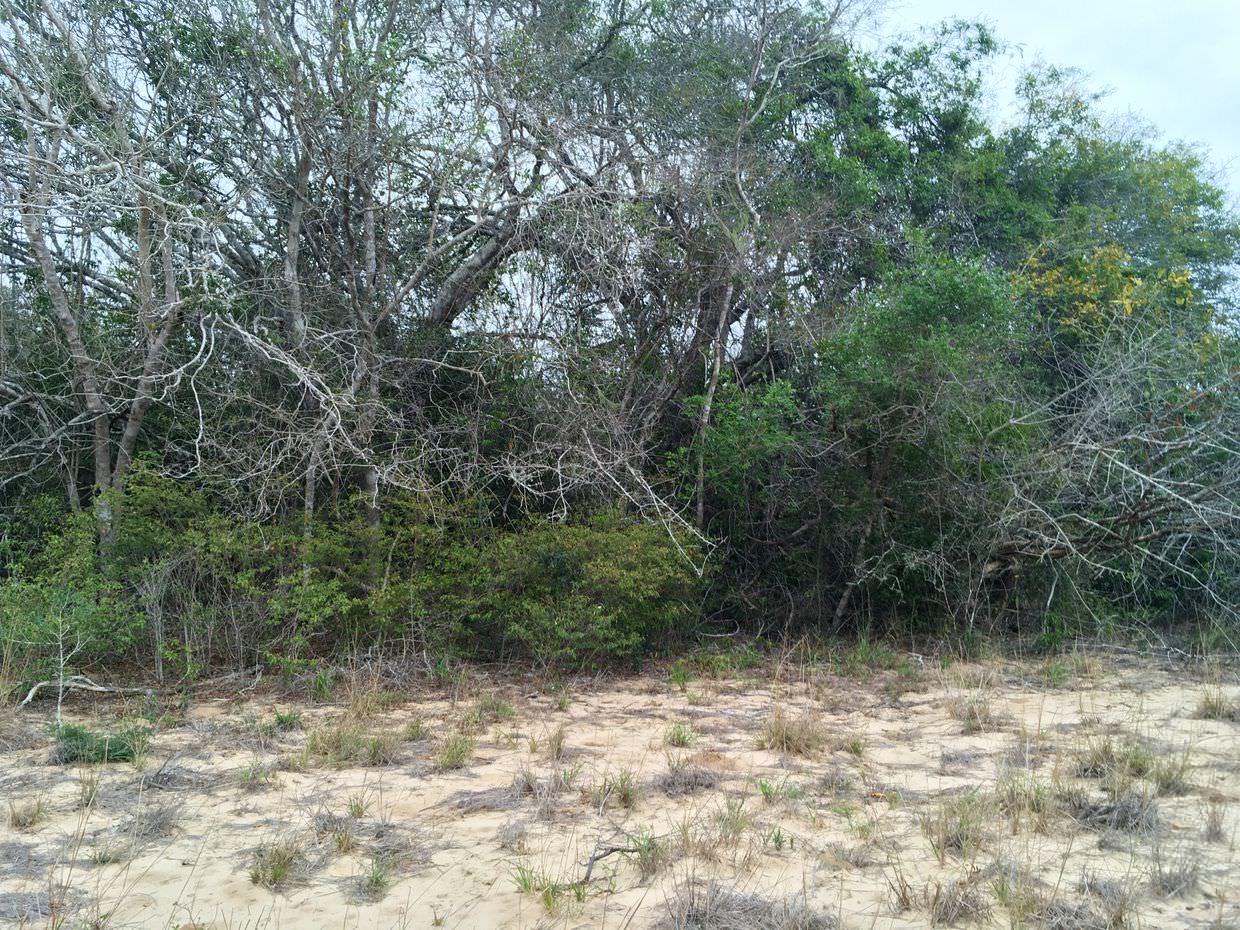
Day 12 - Camera traps and baits, and potjie
On our penultimate day we had rain again, great for the park, a little uncomfortable for us. At the boma the three yearlings were having breakfast, and a large owl flew by us. Our journey interrupted by a breeding herd of elephants blocking the road.
This morning we’d focus on lions – sort of; Tembe has so many lions that many of them are best monitored with nyala baits and camera traps. We had 4 to set up near ponweni hide, the baits themselves were already prepped; nyalas hung from a tree branch by their necks, sliced open and gutted, guts left on the floor.
At the hide we waited and waited for the rain to cease. Today the hide revealed little; no elephants, or birds, we waited with our coffee and rusks; the taste of the instant stuff warped a little by the thick minerals in Tembe’s water. Eventually we braved it, the drizzle was easing off.
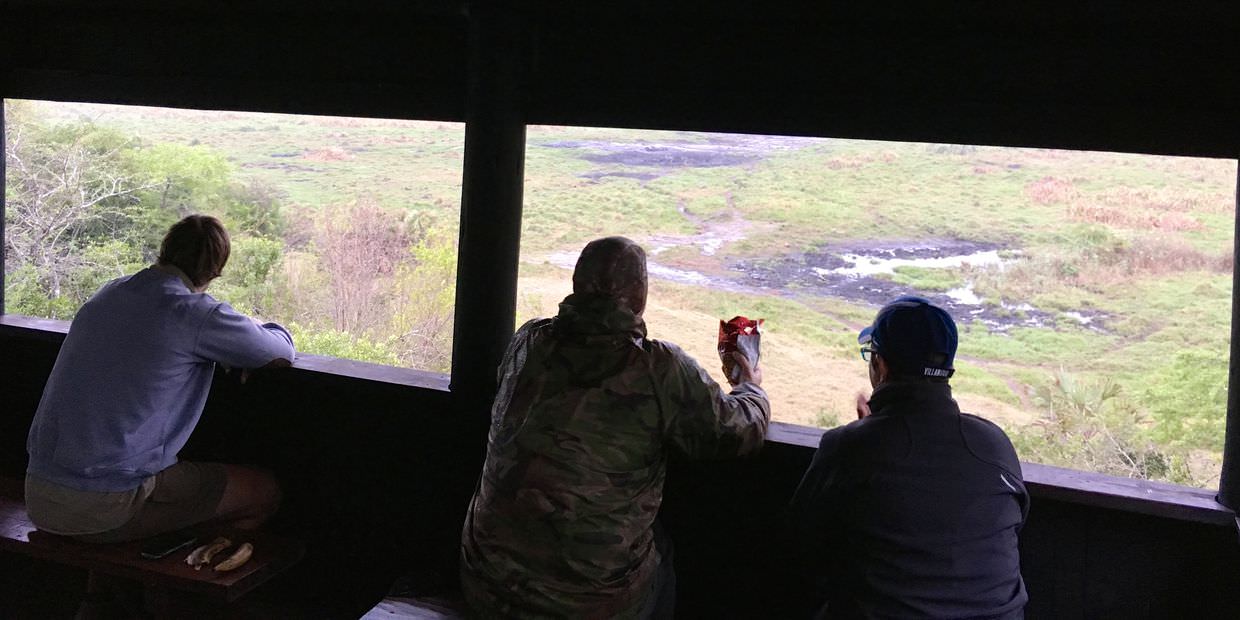
We drove until we found each nyala bait; the hanging carcasses were hard to miss. 3 male and 1 female – a poor foetus sat beneath her, a miniature nyala with visible white stripes, it looked almost ready to start living. At each site we used a tree to tie-up a camera trap enclosure (string and nails), lined up the camera, set the camera trap, and primed the motion sensor. With every hammer into the tree trunk we’d get showered in drips. Elephants and lions have a habit of removing the traps, need to be securely fastened.
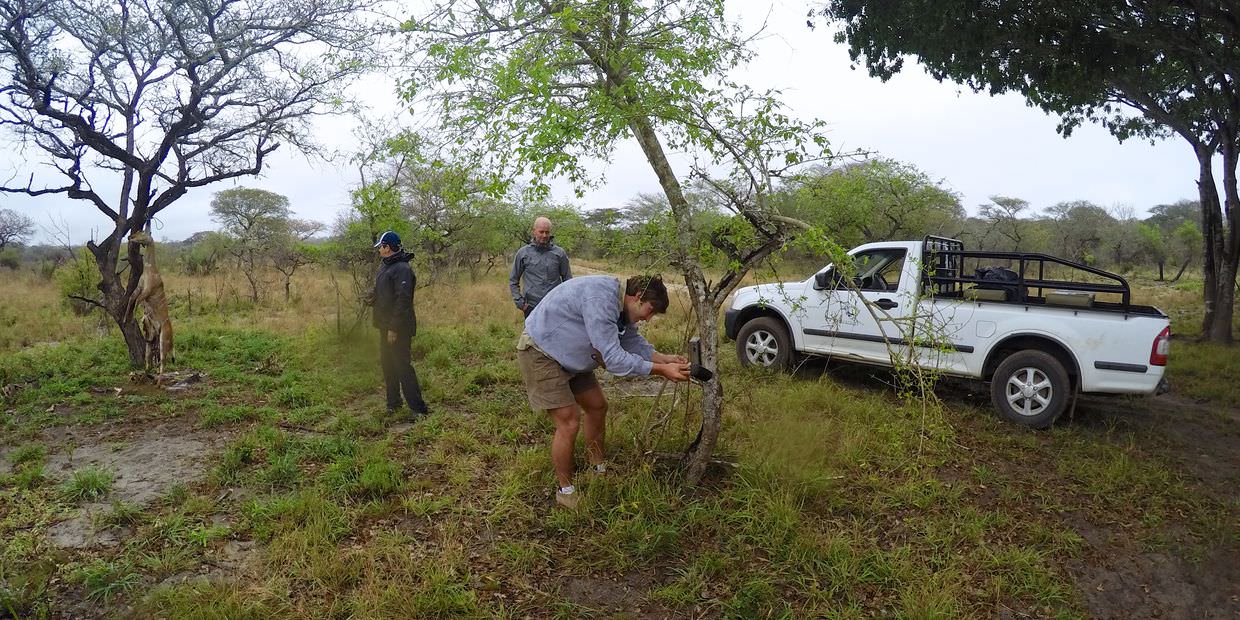
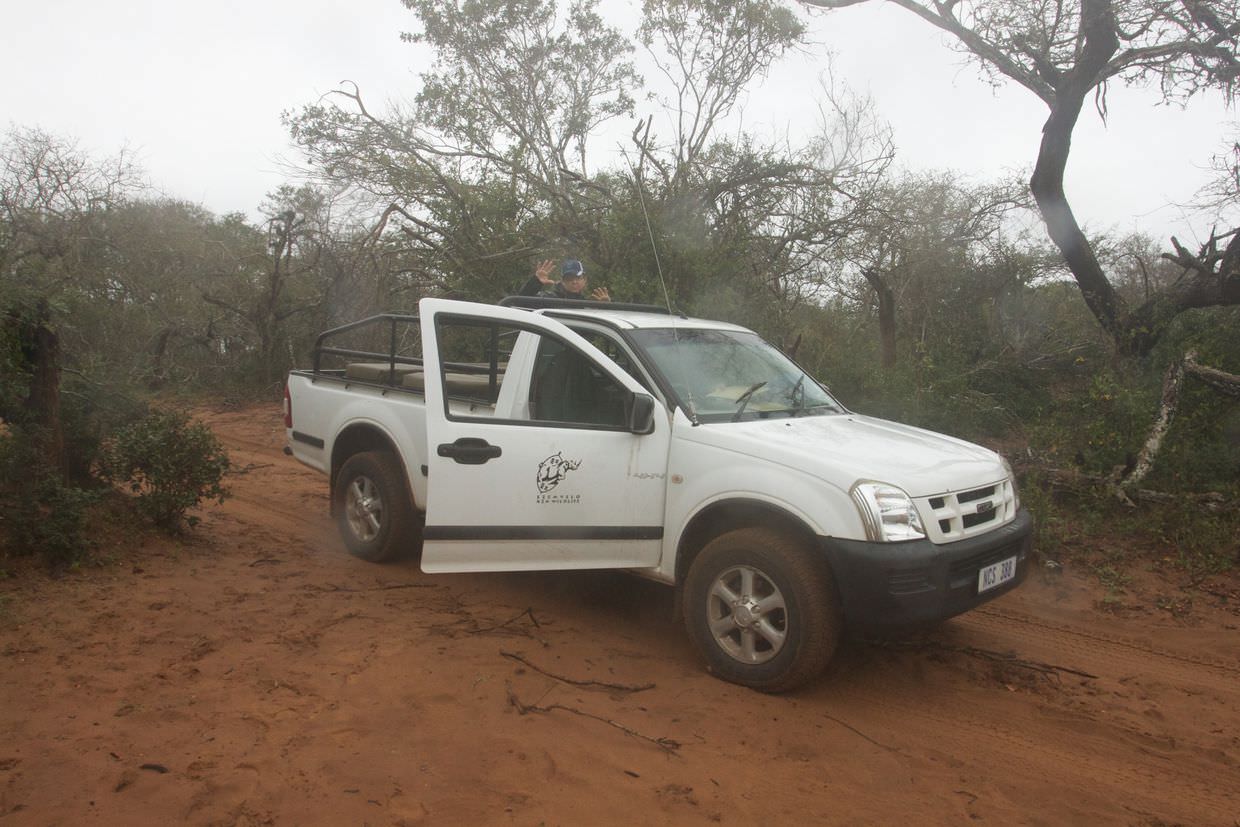
While doing all this I finally got the opportunity to photograph the gorgeous bush-shrike, the shot wasn’t as good as my imaginary one, but it’ll do. A juvenile martial eagle also graced the skies. The nyala, the living ones, all sheltered beneath the trees, shivering and wet. On the way back we attempted to track lions, scanning for M25, M26, Kampa, Nyanga, F76. We didn’t catch a beep.
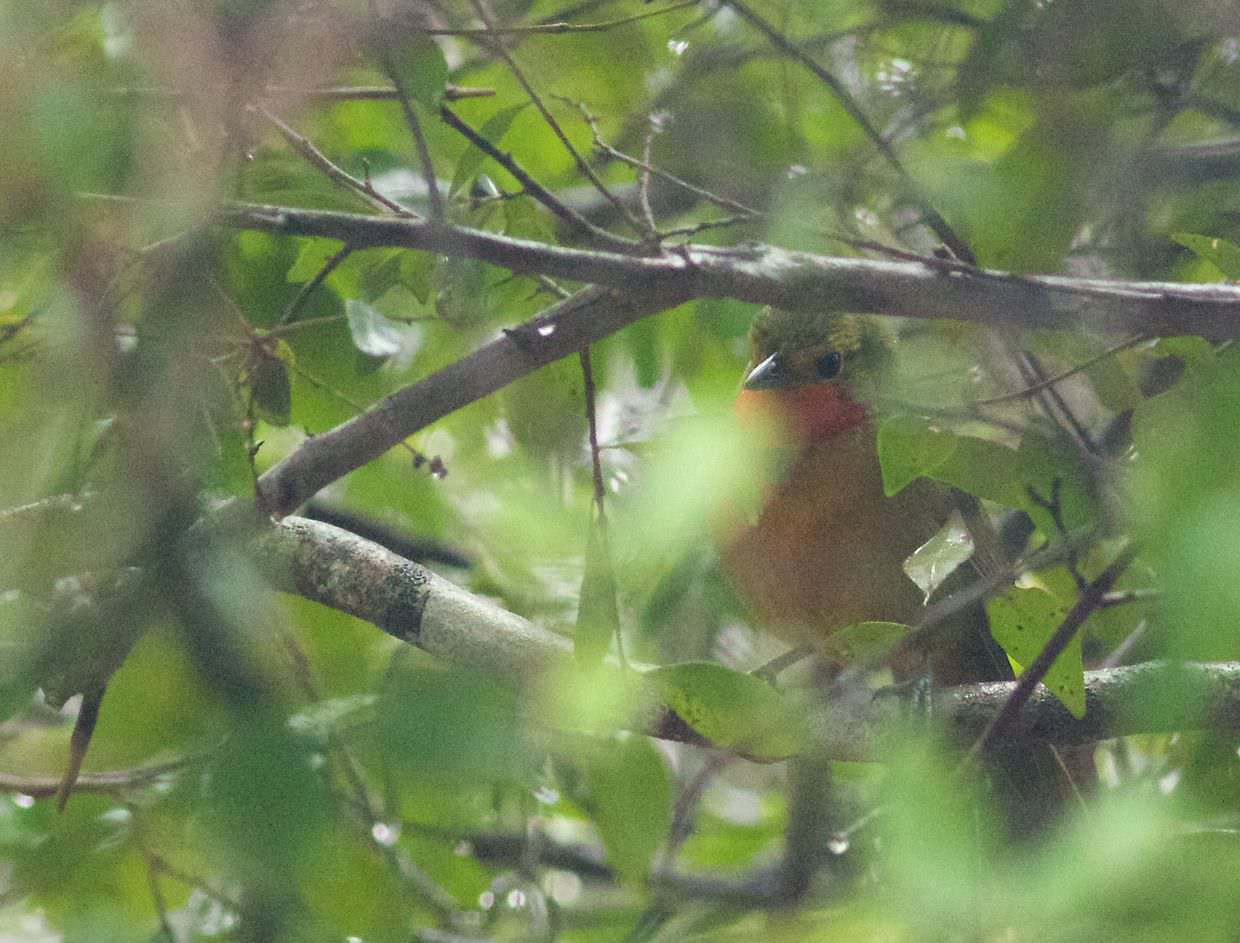
Drama at camp
Overnight Lindsey had had trouble sleeping; she was woken in the night and could hear movement outside her chalet. She didn’t want to investigate by herself, but it sounded close – she was up most of the night.
Back at camp, after our session, we had a visitor. A large elephant bull walked along our perimeter. We’d just driven into camp, the gate was open; we all eyed the elephant nervously – it stood outside the camp, staring at us, looking through the open gate. If it came in it would be bad. After a tense few moments the “ele” moved on, and Hayden rushed to shut the gate.
There was one other exciting discovery; near the laundry we found what looked like a large pink worm squirming in the mud. It wasn’t quite a worm, but a worm snake. A mysterious reptile.
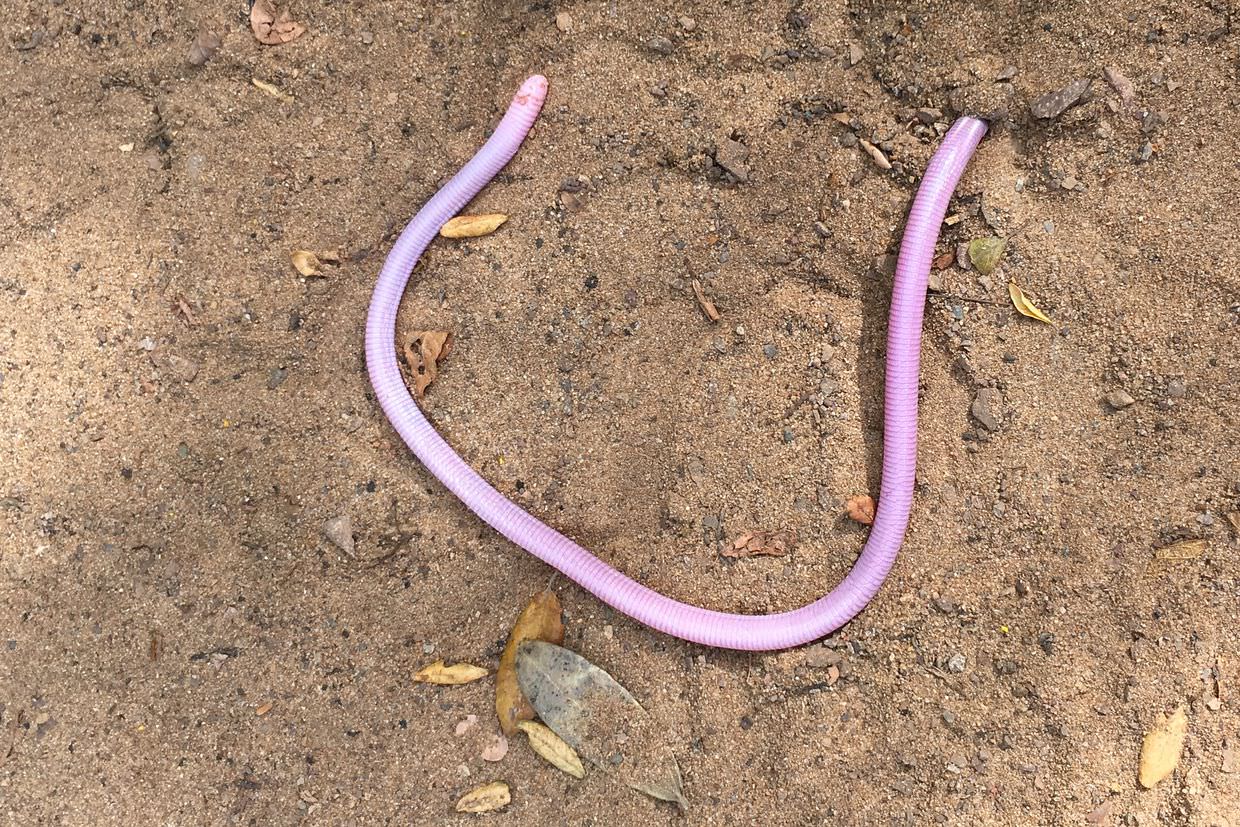
Call-up failure
The dogs had moved. Satellite data showed them on the other side of the park. From the water tower we triangulated a rough position and headed down to find them. I was scanning, sitting in the front, doing my best to locate them. The signal was strongest at a crossroad – 2 bars, the first signal we’d had in days. The road was intersected by a well used game path – nyala and elephant tracks littered the scene, but we found dog tracks too. Tyre tracks suggested guides had been here earlier, they might have seen the dogs.
Elsa was at our 2 o’clock, we tied a fresh leg of nyala bait to a tree and set up the speaker system. How fresh? The animal was still a little warm, shot that afternoon. We began the deafening twitter noises, and it seemed to work – I scanned as we played, and the signal grew stronger, 2 bars, 4 bars, 6 bars. It was working. But they didn’t appear, perhaps they watched us from an invisible vantage, the signal quietened again, maybe it was just bouncing. We played the audio again, and again. They never showed up. But we were close. We left the leg there for them, chained, near to the road.
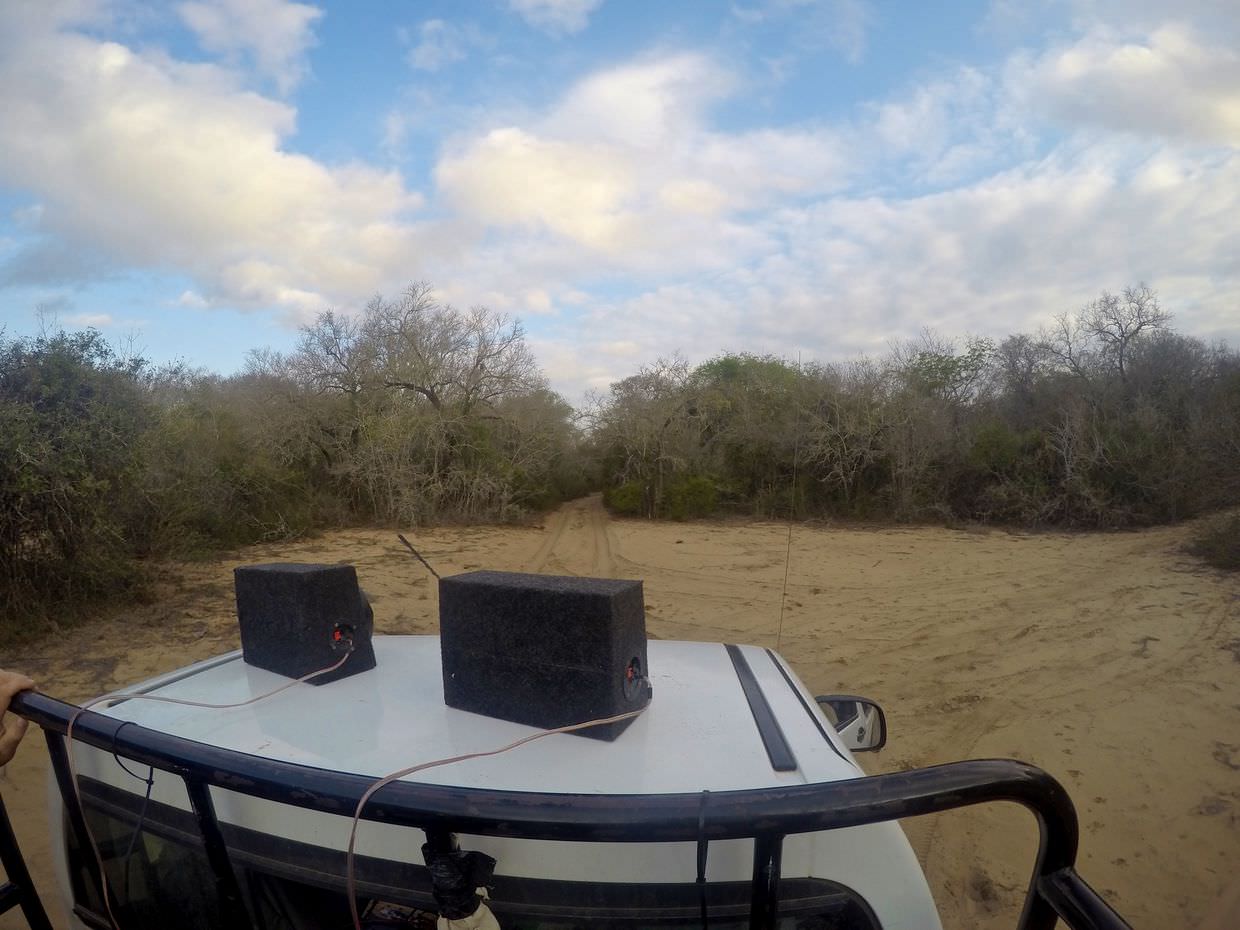
Potjie
Tonight Hayden cooked for us. He made us a traditional potjie, pronounced “Poy-key”, in a cast iron pan over an open fire (coals, not wood – you can’t burn the wood in Tembe – wood must decay and return to the sand over many years). With the potjie, a salad, corn meal, and cheese and onion toasties grilled on the fire. Delicious.
